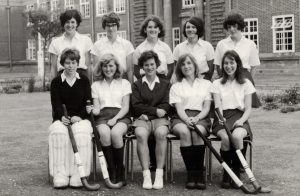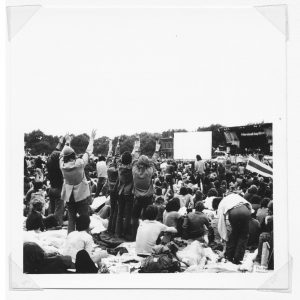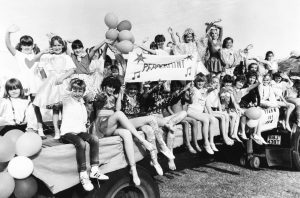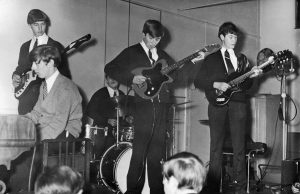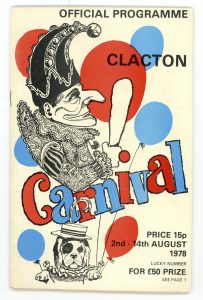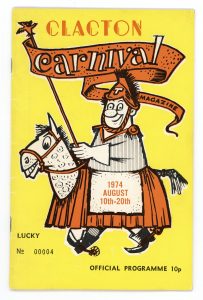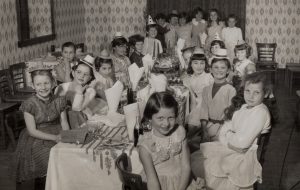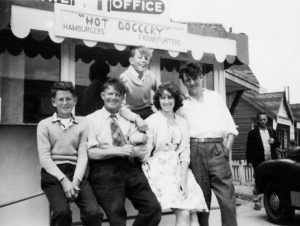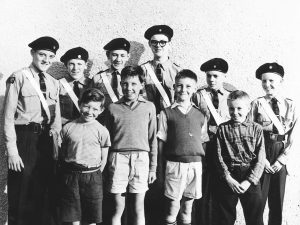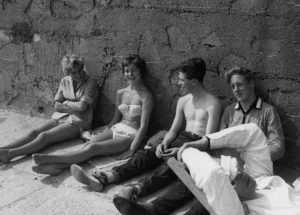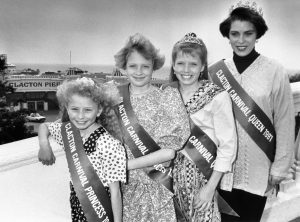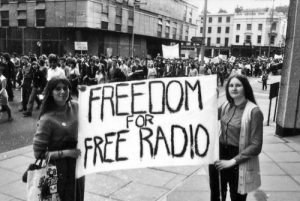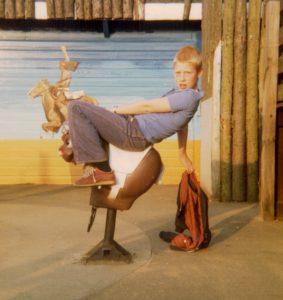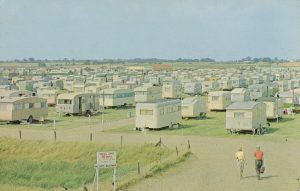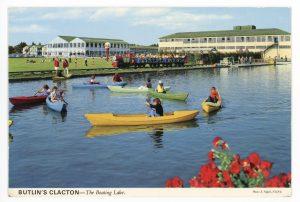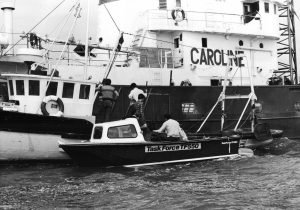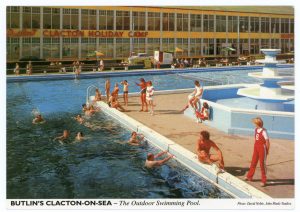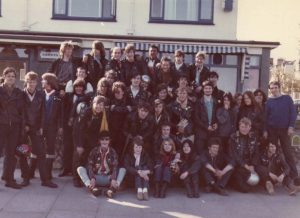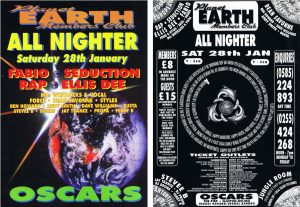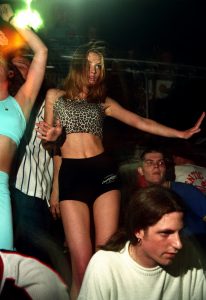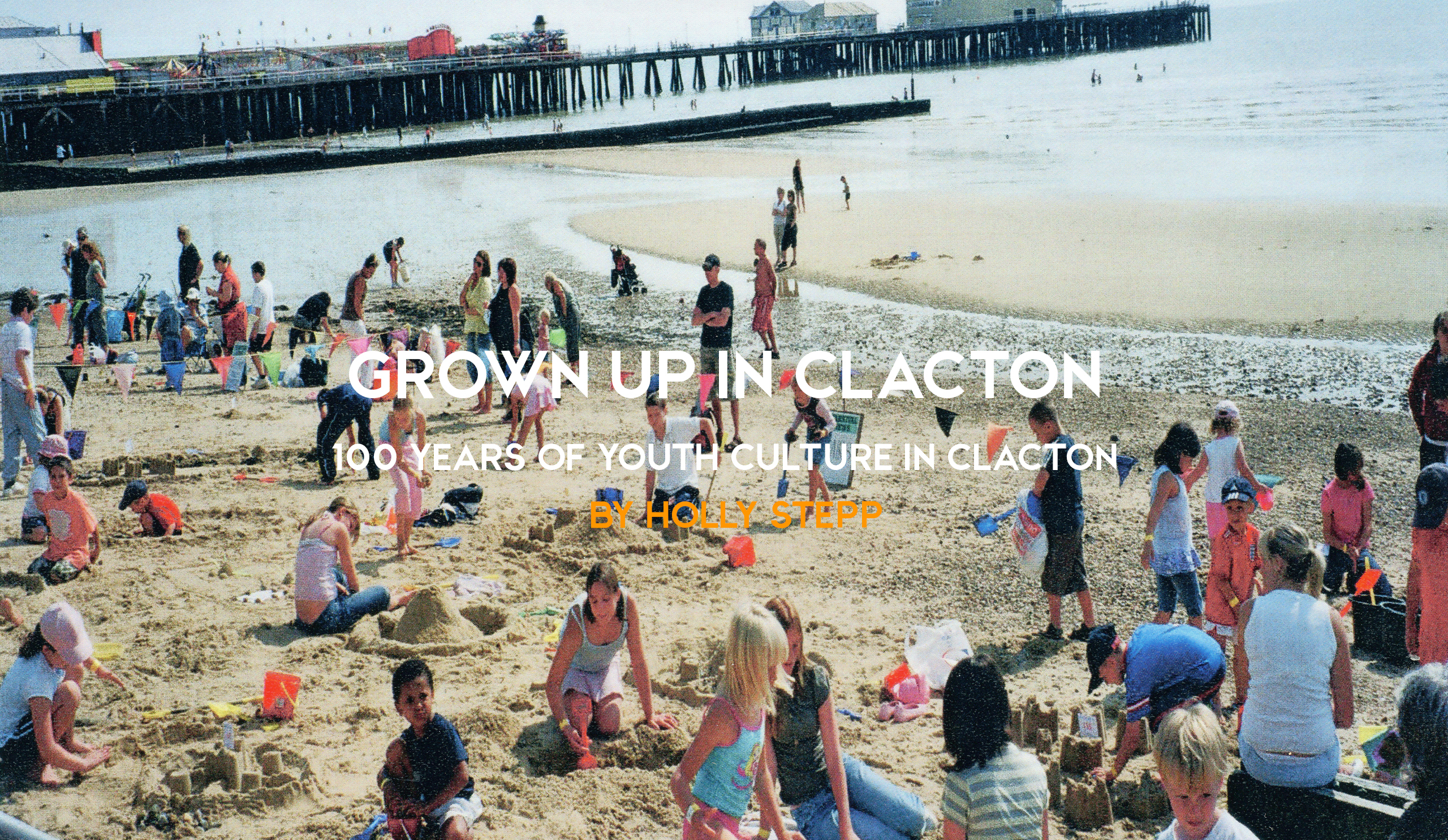

The Grown up in Clacton collection illustrates the lived experiences of young people in Clacton-on-Sea over the 20th century through an assortment of donated ephemera featuring photography, postcards, newspaper cuttings, ticket stubs, documents, and oral histories. The collection explores the varying experiences of youth in Clacton, providing a new lens with which to look at British youth culture. Over four months, the MOYC collected stories of romance, music, holidays, and first jobs as residents opened up about their lives, illuminating the history of the seaside town.
Clacton-On-Sea is a popular holiday destination and depictions of this make up the majority of this collection, encapsulating the essence of the family holiday beautifully. The public shared photographs and tales of travelling to Clacton by coach with their families and spending long summers by the sea, playing cricket on the beach, and saving their pocket money to play in bingo halls and at the amusements on the pier.
“We were allowed to walk from Jaywick down to Clacton Pier with some money so we went down to Clacton Pier, we went on the amusements and I’d kept four pence, four old pennies, for my bus fare back to Jaywick and I dropped a penny and it went down the boards on the pier, and I can remember using my other three pennies to try and win some money back for my bus fare.”
Clacton seafront takes centre stage throughout the collection and holds a firm place in people’s hearts when they think about their youth, "the beach has always held its attraction for young and old” (Malcolm Batty). The collection features a wealth of postcards portraying images of Clacton Seafront and holiday sites featuring lines upon lines of bungalows. These materials provide a snapshot of what a holiday in Clacton would have looked like for those who submitted them, whilst demonstrating how postcards have changed over the years and have become a piece of memorabilia to collect as well as send to loved ones.
The influx of people visiting Clacton increased dependency on tourism, and the people who donated to the archive spoke about their first jobs working during the summer, and the family businesses they were part of. It is particularly through the oral histories collected that these experiences come to light; several participants recollected how central growing up in a family business was to their upbringing, whether this was working in a privately-owned car park or as a barrow-boy assisting tourists with their luggage.
“There’d be groups of us with barrows asking the people if we could carry their luggage and wheel their luggage up to … and you know they’d give us half a crown or 5 shillings or whatever to haul their cases up to these bungalows that they were hiring in Jaywick.”

Tourism also allowed residents to form meaningful relationships with tourists, residents acknowledged the friendships they made with those who visited the area over the summer months, some blossoming into romantic relationships. “I do remember meeting a boy at the palladium which is not there now and that’s as far as we were allowed to walk, and I can remember thinking I was quite grown up ‘cos I’d met this boy and sat not on the beach but on the grass chatting to him thinking oh I’ve got a boyfriend.” (Jean Clydesdale) They also referenced their family holidays outside of Clacton through photos of trips to the Isle of Wight, Lake District, and Great Yarmouth. Importantly, Clacton’s value does not lie exclusively in its holiday status. The collection tracks both the experiences of those who visited Clacton every year, and the experiences of those who were born and grew up there. We can observe the public’s experiences growing up as children playing on the beach and in school pictures, and later as they pose in front of their scooters dressed in the latest fashions. The people who submitted their stories also discussed their experiences in different youth organisations and noted the significant role that they played in their journeys through adolescence. These experiences were intergenerational and evidence the everlasting importance that youth clubs offer to those growing up in Britain.
The prominence of music in Clacton is first acknowledged through recollections of Ivy Benson and her band residing in St Osyth when they toured around army bases in the 1940s. Beyond this, residents told us about gigs at the Morocco Club and the Teacher Training College, as well as concerts further afield in London. Whilst most people were captivated in the audience, some started bands themselves and performed in Clacton’s iconic venues; everyone was completely absorbed by music and this passion is captured throughout the collection.
“There we are outside the Martello Tower having been just signed up by EMI for a singles deal prior to this we were called The Marvin Lois Enterprise and we did regular The Leys in Great Clacton … and also The West Cliff, though that was very big The West Cliff Hotel”
This culminated during Weeley Festival 1971 after 150,000 people descended on the town to hear live music played non-stop over the weekend. “(I) don’t really know where everyone came from, but I think they did come from far and wide.” (Fiona nee Donaldson)This project includes posters, newspaper clippings, photos, and oral histories that testify to the legacy of the one-off event that is recognised as an iconic event in British musical history. To this day, attending a music festival has become a rite of passage for young people and it is through the donated material that we see the beginnings of this.
Clacton provided the backdrop for one of the major shifts within youth culture and music history - pirate radio. Radio London, Radio Caroline, and Radio Nordsee arrived in the early 1960s and their role in shaping the youth culture of the period is undeniable. Several of those who submitted materials spoke about their first time listening to these stations and taking boat rides to visit the disk-jockeys, accompanied by images of DJs aboard the iconic ships that have defined a generation. “(I) came across Radio Caroline and it sort of stayed there ever since from that point on, we realised there was things other than the BBC although I would say in that very moment in time, I wouldn’t have known it was from a ship, but it soon became clear it was and that was off Felixstowe.” (Richard Walker) Grown Up in Clacton is one of a kind in tracking the rise and fall of pirate radio in the 1960s, with discussions of these first broadcasts, government efforts of radio jamming, the Free Radio Protests that followed, and The Marine and Broadcasting (Offences) Act 1967 that ended their service. “We went on the march, we went up to Downing Street where the police were to stop us going down Downing Street we handed in a petition and it was all very moving and we all had radios on which were on the medium wave.” (Richard Walker) The impact of pirate radio is long-lasting, it no longer exists just as a pop culture alternative but has evolved to promote a number of music styles. Still under attack from the government, pirate radio signifies the rebellious attitude often associated with youth and helps to identify the ways that musical outputs, musical styles, and communities of knowledge have adapted over the last 60 years, and how youth culture has impacted and been impacted by these changes.
“Well it was very exciting in those days, I sort of said about having to fill up the scooters and everything and of course then the amusements became a really big attraction because there were so many people walking around down there”

1The musical prowess of Clacton-On-Sea existed beyond this period and continued to exist as a hub for musical creativity for DJs at the end of the 20th century. The collection features a range of photos and event posters from the iconic venue Oscars dating back to the mid-1990s. Donor submissions show that people from across the UK travelled to attend events there, putting Clacton on the map as an important place for rave culture. Pictures from the events capture the essence of the scene, from crowded dancefloors to the euphoric faces of people dancing on podiums. There is a wealth of posters that provide details of the all-nighters that took place at Oscars such as DESTINY: THE CREAM and PLANET EARTH, each with different zones that played different types of electronic music performed by resident DJs. XL Recordings and the Prodigy performed two sets at the iconic venue, a prolific appearance that further demonstrates Clacton’s position as a buzzing seaside town with a passion for music.
The collection helps us to track early discussions of youth culture to what we now understand to be a multifaceted concept with an array of experiences and identities. Clacton-On-Sea has a reputation for being a holiday town, but this collection proves that it is much more than that. There are an array of histories and experiences portrayed that offer a richer understanding of Clacton, whilst helping us to understand how youth was experienced through different generations in a seaside town as opposed to a big city. Through the generous donations from residents in the area, it is clear to see that Clacton was a nucleus for creativity and amusement for young people and it’s important that we recognise the area for its contribution to youth culture.

